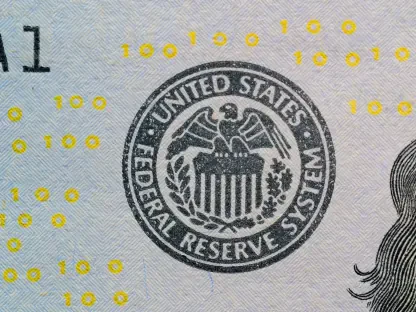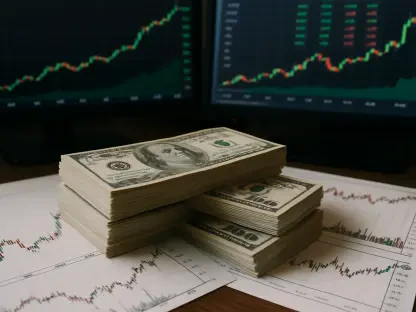The status of the US dollar as the world’s leading reserve currency has conferred upon the United States considerable economic power and influence. However, actions and policies implemented during the administration of former President Donald Trump have raised concerns regarding the dollar’s continued supremacy in global markets. Past experiences, such as the waning dominance of the British pound sterling following World War II, offer a historical context through which the current scenario can be examined. The pivotal question is whether similar forces of change are at work today, potentially catalyzing a shift in global economic dynamics and prompting consideration of alternative reserve currencies.
Understanding Reserve Currency
Definition and Significance
A reserve currency is the most trusted form of currency used globally for international trade and valuation, providing its issuing nation with significant economic leverage. Its fundamental role in international finance involves facilitating transactions between countries and serving as a benchmark for other currencies. Economic stability and an unwavering ability to honor debts are critical factors that reinforce trust in a reserve currency. Post-World War II, the US emerged with a robust economy, making the dollar an attractive and reliable choice for global markets. Today, its ubiquitous nature underscores the extent of its influence. As a reserve currency, the dollar intersects with a wide array of international trade practices, establishing standards for value and conducting transactions involving crucial commodities like oil and gold.
The stability of a reserve currency is paramount to maintaining global economic equilibrium. Countries holding significant reserves of a currency implicitly endorse its stability and predictability. When this assurance falters, the international monetary system faces increased volatility and instability, which can lead to diminishing trust. Consequently, any perceived threats or challenges to a currency’s stability, whether through fiscal policy changes or geopolitical volatility, can ripple through and unsettle global markets. Understanding these dynamics is essential to appreciating why shifts in the status of the US dollar—or any potential reserve currency—hold profound implications for international trade and finance.
Historical Context
The transition of reserve currency status from the British pound to the US dollar is rooted in the economic realities of the post-World War II landscape. The conflict left much of Europe and Asia in economic ruin, whereas the United States emerged relatively unscathed, bolstered by its industrial capacity and geographical insulation. This situation allowed the US dollar to ascend as the preferred reserve currency, effectively supplanting the pound as Britain’s global influence waned. The Bretton Woods Agreement of 1944 further institutionalized the dollar’s dominance by pegging most global currencies to the dollar, which was itself pegged to gold. This system reinforced the dollar’s role in global economics, symbolizing stability and trust.
The economic supremacy of the US during this period was integral to this shift in currencies. While the British Empire struggled with postwar recovery and decolonization, the United States capitalized on its industrial prowess and broadened its geopolitical reach. As the principal reserve currency, the dollar became synonymous with economic security and international trust. This historical background provides insights into how global circumstances and economic policies can redefine monetary hegemony. As the global landscape evolves, contemporary economic actions have the potential to instigate similar shifts, with implications that could reverberate through international trade and financial systems.
Threats from Trump’s Policies
Fiscal and Trade Policies
During Trump’s tenure, economic strategies centered on reducing federal debt, a focus typically seen as prudent yet paradoxical when dealing with a reserve currency. A reserve currency thrives on widespread distribution and ensures liquidity within global markets, often necessitating substantial federal debt. Trump’s push for debt reduction could inadvertently limit the availability of dollars, thereby damping its global reach. This restriction becomes particularly concerning in trade, where US treasury bonds and dollars are extensively utilized. Without the strategic deployment of these financial tools, the intent to curtail debts instead threatens to undermine the international influence of American currency.
Trump’s trade policies also introduced potential turbulence into global markets. Tariff implementations and the initiation of trade wars, notably with China, disrupted established trade routes and alliances. Trade uncertainties affect perceptions of economic stability, critical to maintaining reserve currency status. As the US retaliated against imports, even traditional allies faced increased economic tensions. The repercussions from such policies could rattle investor confidence and invite increased speculation regarding the dollar’s long-term viability as a reserve currency, consequently influencing market behavior and the strategies of international financial institutions.
Interest Rate Manipulation
Another area of concern highlighted during Trump’s administration relates to his influence, whether real or perceived, over the Federal Reserve’s decision-making regarding interest rates. Reserve currency status is intricately tied to the trust and reliability of financial policy. A reserve currency’s strength hinges on the independence of the issuing nation’s central bank and the consistency of its interest rate strategies. Any political interference or pressure that suggests manipulation can undermine market confidence, spurring concerns over currency stability akin to the issues faced by countries with less stable monetary policies.
In this context, Trump’s vocal commentary on interest rate adjustments put the perceived impartiality and independence of the Federal Reserve in question. If speculation arises that interest rate policies are reactionary or politically motivated, it dilutes faith in the currency as a stable reserve option. Similar precedents in nations where political figures exert considerable influence over central banks have led to significant inflationary pressures and economic instability, as demonstrated by examples like the case of the Turkish lira. Such scenarios serve as cautionary tales of how perceived interest rate manipulation can jeopardize reserve currency status.
Economic Consequences of Losing Reserve Status
Impact on Living Standards
The consequences of the dollar losing its status as the leading reserve currency would be profound, significantly impacting the United States’ economy. One immediate effect would be the need for the US to directly pay for its imports, which could substantially lower American living standards. The convenience of the current system, where trade imbalances allow the US to consume more than it produces without immediate financial outflows, would be jeopardized. This shift could result in increased costs for goods previously purchased with the ease afforded by reserve currency privileges, thus affecting domestic economic health.
Trade imbalances that Trump has been critical of paradoxically support the existing economic advantages the United States enjoys. By resolving such imbalances abruptly, the US might inadvertently reduce the dollar’s international prominence. These dynamics underscore an irony within the administration’s economic policy—a misunderstanding that the very imbalances deemed problematic actually underpin the preferential status the US currently enjoys in global trade. Coupled with potential devaluation of the dollar in the absence of reserve status, these elements illustrate the interconnectedness of national economic policy and global financial systems, where considerable changes could disrupt domestic prosperity.
Trade Imbalances
Trade imbalances are often viewed through a negative lens, yet they contribute to sustaining the US’s economically advantageous position. When Trump criticized these imbalances, the complexity of their influence on global finances was somewhat overlooked. In practice, trade deficits allow other countries to accumulate dollars, which supports the mechanism of the dollar as a principal global currency. As these nations hold US dollars and treasury securities as reserve assets, it, in turn, fosters economic stability. Trump’s intent to address these discrepancies, therefore, unintentionally risked destabilizing a carefully balanced system that underpins advantageous trade terms for the United States.
If trade imbalances were drastically altered, the structural support they provide could diminish, affecting liquidity and trust in the US dollar. The ramifications of shifting these dynamics are far-reaching; they could alter foreign reserves management strategies and necessitate broader economic recalibrations. Misunderstandings of these elements thus pose threats not only to the stability of the dollar but also to wider financial equilibrium. Altering or diminishing current trade imbalances without considering the broader implications in international finance can have unforeseen adverse effects on both domestic and international economic systems.
Alternative Reserve Currencies
Prospective Successors
The potential successors to the US dollar face a myriad of challenges that complicate their ascension as credible reserve currencies. Candidates such as the pound sterling, euro, yen, and Chinese yuan each present unique strengths but are hindered by notable obstacles. The euro, for example, represents multiple economies with diverse fiscal policies, which complicates its ability to project a uniform level of stability and reliability. The pound sterling, while historically significant, has seen its influence wane due to economic contractions following Brexit and other geopolitical shifts. The yen is hindered by Japan’s considerable national debt, which raises concerns regarding fiscal sustainability.
The Chinese yuan, while backed by a rapidly growing economy, contends with trust issues on the international stage. Concerns over transparency and regulatory frameworks in China create hesitation among global investors and central banks. Each of these currencies, therefore, has inherent barriers to becoming the dominant global monetary force that the dollar currently embodies. Despite these challenges, the evolving global landscape means that new economic paradigms and geopolitical changes could potentially shift the balance. Yet, the transition would require long-term strategic shifts and broad international consensus.
The Bancor Concept
To address concerns surrounding the instability of relying too heavily on a single nation’s currency, the concept of the “Bancor” could be revitalized. Initially proposed by economist John Maynard Keynes in 1945, the Bancor was envisioned as a supranational currency, based on a basket of national currencies for global settlement. While the proposal didn’t gain traction in its time due to political constraints and the dominant position of the US dollar, its potential benefits resonate in today’s rapidly evolving economic climate. As global markets become increasingly interconnected, a diversified currency basket could offer a more stable foundation for global trade by reducing reliance on unipolar currency systems.
The prospect of a currency basket like the Bancor offers intriguing possibilities for not only broadening global monetary systems but also reducing the potential volatility associated with single-currency dependence. It could provide an equitable platform, with reduced susceptibility to manipulation by any single nation’s policies. In theory, as a collective currency comprising multiple economic powers, it could normalize trade discrepancies and buffer against unilateral fiscal changes by any individual economy. While this introduces additional complexity for global governance and negotiation, it signifies a forward-thinking alternative for safeguarding international financial stability.
Global Trade Interconnection
Ripple Effect in Global Markets
The interconnected nature of global trade means that any alterations to the US dollar’s dominance can send ripples through international markets. Trump’s policies, with their potential to undermine the dollar’s status, highlight the intricate web of relationships sustaining global commerce. The dynamics are such that significant changes in one area of monetary policy can lead to widespread ramifications, potentially affecting international investments, trade agreements, and geopolitical alliances. Adjusting to such disruptions requires adaptive strategies that acknowledge the systemic interdependence of national economies.
If the US dollar were to lose its paramount position, foreign reserves and international trade would undergo significant recalibrations, with economic and political adjustments likely necessary to stabilize emerging currency systems. The shift would require a coordinated, collaborative approach among nations to establish protocols that mitigate risks and unify fiscal standards. This possibility underscores the vital need for comprehensive foresight in shaping economic strategies that are both resilient and flexible in adapting to new realities in global finance.
Future of International Finance
The US dollar’s status as the world’s foremost reserve currency has granted the United States significant economic power and influence internationally. Yet, actions and policies by the administration of former President Donald Trump have sparked concerns about the dollar’s sustained supremacy in global markets. Historically, the decline of the British pound sterling’s dominance post-World War II serves as a reference point for understanding today’s scenario. The central question is whether similar transformative forces are currently in motion that could instigate a shift in global economic structures and lead to the consideration of alternative reserve currencies.
These concerns stem from various international and domestic factors, including changing geopolitical alliances, fluctuating trade policies, and evolving financial systems. As nations grow economically and seek to reduce dependence on the dollar, they may look for other stable and reliable currencies, potentially diversifying the global financial landscape. The implications of such a shift could be profound, affecting global trade balances, investment flows, and economic stability. Observers are now analyzing whether the foundational elements that supported the dollar’s dominance are as robust as they once were or if adaptations are necessary to maintain its leading role in the future.









